Trong tiếng Anh, danh từ là loại từ có nhiều vị trí và giữ vai trò quan trọng trong câu. Nắm chắc kiến thức về danh từ trong tiếng Anh hỗ trợ rất nhiều trong việc làm bài tập và phát triển kỹ năng nghe – nói – đọc – viết. Trong bài viết này, duhoctms.edu.vn sẽ giới thiệu đến bạn trọn bộ kiến thức về danh từ trong tiếng Anh.
1. Định nghĩa danh từ trong tiếng Anh và chức năng của danh từ
Để biết cách vận dụng danh từ trong các bài tập, hội thoại hàng ngày, trước tiên hãy cùng tham khảo qua khái niệm danh từ trong tiếng Anh.
1.1. Danh từ trong tiếng Anh là gì?
Danh từ (Noun) là từ dùng để gọi tên của một loại sự vật, sự vật đó có thể là người, con vật, đồ vật, hiện tượng, địa điểm hay khái niệm. Danh từ được xem là một trong những từ loại quan trọng nhất trong tiếng Anh, nên người học cần tích lũy càng nhiều từ vựng về danh từ càng tốt.
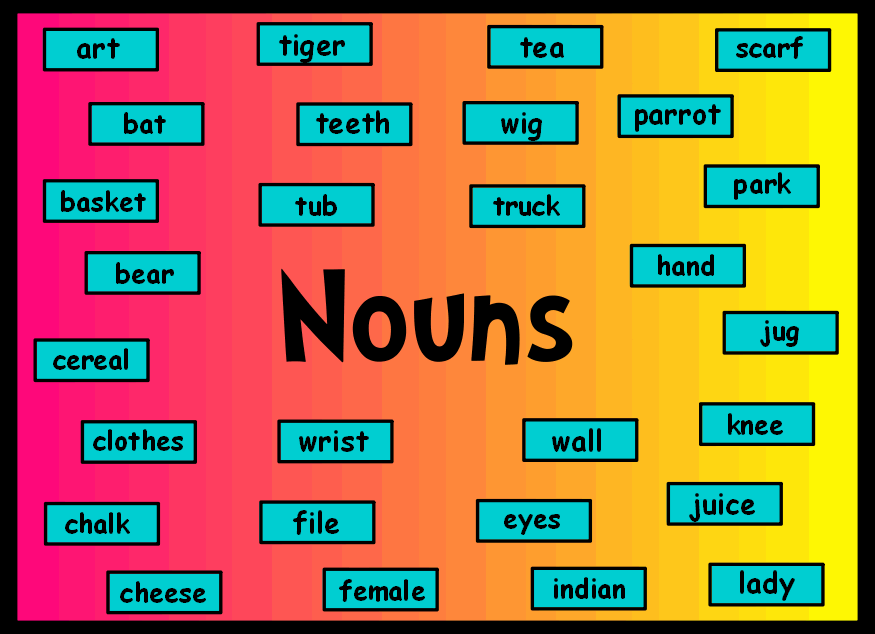
Ví dụ về danh từ trong tiếng Anh:
- Các danh từ chỉ người trong tiếng Anh: he (anh ấy), doctor (bác sỹ), the men (đàn ông),…
- Danh từ chỉ con vật: dog (con chó), cat (con mèo), pet (thú cưng)…
- Danh từ chỉ vật trong tiếng Anh: money (tiền), table (cái bàn), computer (máy tính),…
- Danh từ chỉ hiện tượng: storm (cơn bão), earthquake (động đất),…
- Danh từ chỉ địa điểm: school (trường học), office (văn phòng),…
- Danh từ chỉ khái niệm: culture (văn hóa), presentation (thuyết trình), experience (kinh nghiệm)…
1.2. Chức năng của danh từ
Danh từ làm chủ ngữ trong câu
Khi làm chủ ngữ, danh từ thường đứng ở đầu câu và đứng trước động từ trong câu.
VD: English is my favorite subject. (Tiếng Anh là môn học yêu thích của tôi)
-> “English” là danh từ và làm chủ ngữ.
Danh từ làm tân ngữ gián tiếp/trực tiếp của động từ
Khi đóng vai trò tân ngữ của động từ, danh từ sẽ đứng sau động từ.
- Khi danh từ là tân ngữ trực tiếp:
VD: I want to buy a birthday cake. (Tôi muốn mua một cái bánh sinh nhật)
-> “A birthday cake” là danh từ và làm tân ngữ của động từ “buy”.
- Khi danh từ là tân ngữ gián tiếp:
VD: He give his girlfriend a ring. (Anh ấy tặng cho bạn gái chiếc nhẫn)
-> “His girlfriend” là danh từ và làm tân ngữ của động từ “give”
Danh từ làm tân ngữ của giới từ
Khi đóng vai trò tân ngữ của giới từ, danh từ sẽ đứng sau giới từ.
VD: I have talked to Mrs.Hoa several times. (Tôi đã nói chuyện với cô Hoa vài lần rồi)
-> “Mrs Hoa” là danh từ và làm tân ngữ của giới từ “to”
Danh từ làm bổ ngữ cho chủ ngữ
Khi đóng vai trò bổ ngữ cho ngủ ngữ, danh từ đứng sau các động từ nối như tobe, become, seem,…
VD: John is an excellent student. (John là một học sinh xuất sắc)
-> “An excellent student” là danh từ và làm bổ ngữ cho chủ ngữ “John”
Danh từ làm bổ ngữ cho tân ngữ
Khi đóng vai trò làm bổ ngữ cho tân ngữ, danh từ sẽ đứng sau một số động từ như make (làm), elect (bầu chọn), call (gọi điện thoại), consider (xem xét), appoint (bổ nhiệm), name (đặt tên), declare (tuyên bố), recognize (công nhận),…
VD: Board of directors recognize Tommy the best staff of the year. (Hội đồng quản trị công nhận Tommy là nhân viên xuất sắc nhất năm)
-> “The best staff of the year” là danh từ và làm bổ ngữ trong tiếng Anh cho tân ngữ “Tommy”.
1.3. Vị trí của danh từ trong câu
Ngoài việc hiểu chức năng của danh từ, bạn nên biết rõ dấu hiệu nhận biết một danh từ so với những loại từ khác trong câu, thông qua một số đặc điểm sau:
Đứng sau mạo từ
Danh từ có thể đứng sau những mạo từ như a, an, the. Tuy nhiên, đứng giữa mạo từ và danh từ có thể có tính từ bổ nghĩa thêm.
VD: a beautiful girl (một cô gái đẹp), a lovely cat (một chú mèo dễ thương),…
Đứng sau tính từ sở hữu
Danh từ có thể đứng sau một số tính từ sở hữu cách như my, your, his, her, its, our, their,… Đứng giữa tính từ sở hữu và danh từ có thể có tính từ bổ nghĩa thêm.
VD: my new computer (máy tính mới của tôi), her pink T-shirt (chiếc áo hồng của cô ấy),…
Đứng sau từ chỉ số lượng
Danh từ có thể đứng sau một số từ chỉ số lượng như few, little, some, any, many, all…
VD: I need some coffee. (Tôi cần một chút cà phê)
Đứng sau giới từ
Danh từ có thể đứng sau giới từ như in, of, for, under,… để bổ nghĩa cho giới từ.
VD: This case is under investigation. (Vụ việc này đang được điều tra)
Đứng sau từ hạn định
Danh từ có thể đứng sau một số từ hạn định như this, that, these, those, both,…
VD: these new clothes (chỗ quần áo mới), both you and I (cả bạn và tôi),…
2. Các loại danh từ trong tiếng Anh
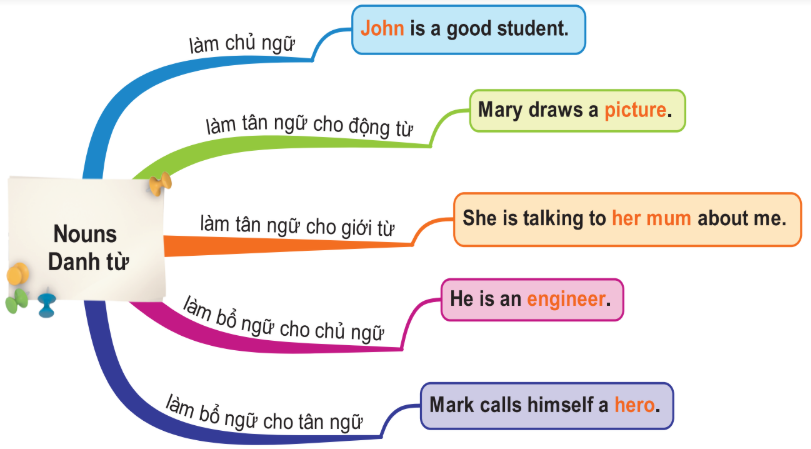
Có mấy loại danh từ trong tiếng Anh? Tùy theo các tiêu chí khác nhau, trong đó có 5 cách phân loại danh từ trong tiếng Anh phổ biến như sau:
2.1. Phân loại theo số lượng: Danh từ số ít (Singular Nouns) và Danh từ số nhiều (Plural Nouns)
- Danh từ số ít là danh từ đếm được với đơn vị số đếm là một hoặc có thể là danh từ không đếm được.
VD: apple, cake, table,..
- Danh từ số nhiều là danh từ đếm được có đơn vị số đếm bằng hoặc lớn hơn hai.
VD: apples, cakes, tables,…
2.2. Phân loại theo cách đếm: Danh từ đếm được (Countable Nouns) và Danh từ không đếm được (Uncountable Nouns)
- Danh từ đếm được là danh từ mà chúng ta có thể đếm bằng số và có thể thêm trực tiếp số đếm vào trước nó.
VD: three pens (3 cái bút), five books (5 quyển sách),…
- Danh từ không đếm được là danh từ mà chúng ta không thể đếm được trực tiếp và không thể thêm số đếm vào trước nó.
VD: water (nước), money (tiền), experience (kinh nghiệm),…
2.3. Phân loại theo ý nghĩa: Danh từ chung và Danh từ riêng trong tiếng Anh
- Danh từ chung trong tiếng Anh (Common Nouns) là danh từ chỉ sự vật, hiện tượng xung quanh chúng ta.
VD: student (học sinh), children (trẻ em),…
- Danh từ riêng trong tiếng Anh (Proper Nouns) là danh từ chỉ tên riêng của một sự vật (tên người, tên địa điểm, tên hiện tượng,…)
VD: Bella (tên người), Japan (Nhật Bản), Red River (sông Hồng),…
2.4. Phân loại theo đặc điểm: Danh từ cụ thể (Concrete Nouns) và Danh từ trừu tượng (Abstract Nouns)
- Danh từ cụ thể là danh từ dùng để chỉ con người, sự vật tồn tại dưới dạng vật chất mà chúng ta có thể nhìn thấy, sờ thấy, cảm nhận được.
VD: Anna (tên người), mom (mẹ), pie (bánh ngọt),…
- Danh từ trừu tượng là danh từ dùng để chỉ những sự vật không thể nhìn thấy mà chỉ có thể cảm nhận được.
VD: happiness (sự hạnh phúc), love (tình yêu), hope (sự hy vọng),…
2.5. Phân loại theo yếu tố cấu thành: Danh từ đơn (Simple Nouns) và Danh từ ghép (Compound Nouns)
- Danh từ đơn là danh từ chỉ bao gồm một từ duy nhất.
VD: baby (em bé), tree (cái cây), job (công việc),…
- Danh từ ghép là danh từ gồm hai hay nhiều từ kết hợp với nhau. Danh từ ghép khi khi kết hợp có thể viết dưới dạng hai từ riêng biệt hoặc hợp lại thành một từ.
VD: greenhouse (nhà kính), bedroom (phòng ngủ), toothpaste (kem đánh răng),…
3. Ngữ pháp tiếng Anh liên quan đến danh từ
3.1. Những đuôi danh từ thông dụng
Đuôi danh từ là một trong những “tín hiệu” để các bạn nhận ra từ vựng đó là danh từ khi làm bài tập hay giao tiếp bằng tiếng Anh. Vậy cụ thể danh từ có những “đuôi” như thế nào?
- -tion: nation, operation, suggestion, mention…
- -sion: conclusion,illusion…
- -er: producer, manufacturer, partner…
- -or: operator, vendor, conductor…
- -ee: employee, attendee, interviewee…
- -eer: engineer, career,…
- -ist: scientist, tourist,..
- -ness: happiness, sadness,..
- -ship: friendship, leadership,..
- -ment: management, arrangement,..
- -ics: economics, physics,..
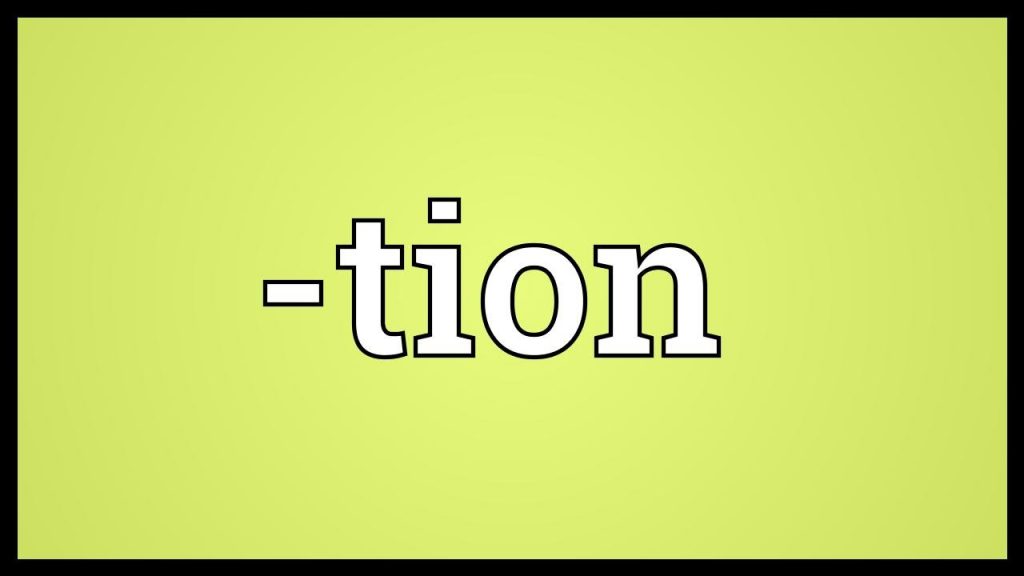
- -ence: science, conference,..
- -ance: performance, importance, significance..
- -dom: freedom, kingdom,..
- -ture: nature, picture,..
- -ism: tourism, criticism,..
- -ty/ity: ability, honesty,..
- -cy: constancy, privacy,..
- -phy: philosophy, geography..
- -logy: biology, psychology, theology..
- -an/ian: musician, politician, magician , ..
- -ette: cigarette, etiquette..
- -itude: attitude,..
- -age: carriage, marriage,..
- -th: month, length, growth,..
- -ry/try: industry, bakery,..
Một số trường hợp ngoại lệ:
- -al: approval, proposal, renewal, refusal, professional….
- -ive: initiative, objective, representative…
- -ic: mechanic..
3.2. Cụm danh từ trong tiếng Anh (Noun Phrase)
Định nghĩa
Cụm danh từ là một cụm từ có một danh từ đóng vai trò là thành tố chính, được bổ nghĩa bởi các thành phần bổ nghĩa đứng trước hoặc đứng sau. Cụm danh từ có chức năng như một danh từ, có thể làm chủ ngữ, tân ngữ hoặc bổ ngữ trong câu.
Ví dụ: a beautiful girl (một cô gái đẹp), a delicious dish (một món ăn ngon), a bottle of water (một bình nước),…
Cấu trúc của cụm danh từ trong tiếng Anh
Thông thường, một cụm danh từ thường có cấu trúc:
Hạn định từ + bổ ngữ + danh từ chính
Hạn định từ bao gồm: mạo từ (a,an,the), từ chỉ định (this,that,these,those), từ chỉ số lượng (one/two/three,…), tính từ sở hữu (my/your/his/her…).
VD: These two bicycle were stolen yesterday. (Hai chiếc xe đạp này bị mất hôm qua)
Bổ ngữ trong cụm danh từ thường là tính từ, và nó bổ nghĩa cho danh từ chính trong tiếng Anh. Nếu có nhiều tính từ bổ nghĩa, bạn cần lưu ý sắp xếp theo quy tắc OpSACOMP:
- Opinion (quan điểm, đánh giá) – Ví dụ: good, pretty, ugly…
- Size/Shape (kích cỡ) – Ví dụ: short, tall, big, small,…
- Age (độ tuổi) – Ví dụ: young, old, new,..
- Color (màu sắc) – Ví dụ: black, pink, red,…
- Origin (nguồn gốc, xuất xứ) – Ví dụ: Chinese, US, UK,…
- Material (chất liệu) – Ví dụ: plastic, steel, silk…
- Purpose (mục đích, tác dụng) – Ví dụ: healing, traveling,…
VD: a big black car (một chiếc xe ô tô to và màu đen)
3.3. Cụm danh động từ (Gerund phrase)
Danh từ có thể kết hợp với các từ chỉ số lượng ở phía trước, các từ chỉ định ở phía sau và một số từ ngữ khác để lập thành cụm danh từ.
Trong cụm danh từ, các phụ ngữ ở phần trước bổ sung cho danh từ các ý nghĩa về số và lượng. Các phụ ngữ ở phần sau nêu lên đặc điểm của sự vật mà danh từ biểu thị hoặc xác định vị trí của sự vật ấy trong gian hay thời gian.
Cụm danh động từ là một nhóm từ bắt đầu bằng một danh động từ (động từ tận cùng bằng -ing). Nhóm từ này được gọi là cụm danh động từ vì nó được dùng như một danh từ. Cụm danh động từ có chức năng như chủ ngữ hoặc tân ngữ trong câu.
VD: The most interesting part of our trip was watching the sun setting. (Phần thú vị nhất trong chuyến đi của chúng tôi là xem mặt trời lặn.)
3.4. Sở hữu cách của danh từ (Possessive Nouns)
Sở hữu cách là một hình thức chỉ “sự sở hữu” của một người, một loài vật, hoặc một quốc gia,… đối với một người hay một vật nào đó. Khi áp dụng sở hữu cách với danh từ, bạn cần lưu ý một số quy tắc sau:
- Công thức chung: Người sở hữu + ‘S + vật/ người thuộc quyền sở hữu (tức là thuộc về người đó)
VD: Tom’ s T- shirt (áo thun của Tom), Anh’s mother (mẹ của Anh),…
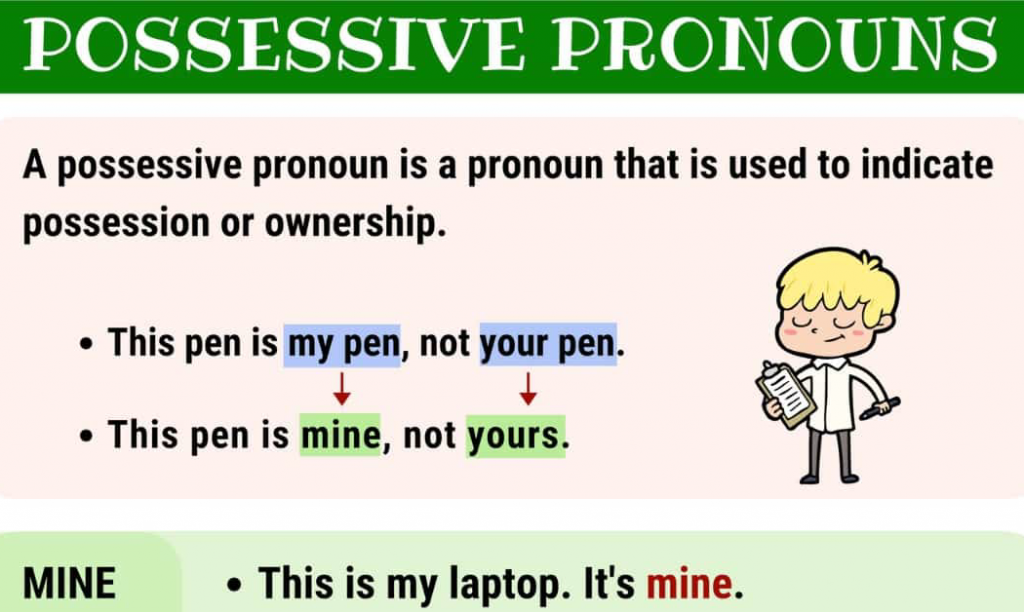
- Đối với danh từ số ít và danh từ số nhiều mà không tận cùng là s: Thêm ‘s vào sau.
VD: a man’s job, women’s clothes,…
- Đối với danh từ số nhiều tận cùng là s: Thêm dấu ‘ vào sau chữ s.
VD: the students’ exam, the eagles’ nest,…
- Đối với danh từ chỉ tên riêng: thêm ‘s vào sau danh từ
VD: Ms.Lily’s house, Lam’s car,…
- Đối với danh từ ghép: Thêm ‘s vào sau từ cuối cùng của danh từ
VD: my sister-in-law’s gift,…
4. Cách biến đổi danh từ số ít sang danh từ số nhiều
4.1. Hầu hết ta thêm “S” vào sau danh từ
| Danh từ số ít | Danh từ số nhiều | |
| A finger (một ngón tay) | —> | Fingers (nhiều/những ngón tay) |
| A ruler (một cây thước kẻ) | —> | Rulers (nhiều/những cây thước kẻ |
| A house ( một ngôi nhà ) | —> | Houses (nhiều/những ngôi nhà) |
4.2. Những danh từ tận cùng bằng: S, SS, SH, CH, X, O + ES
| Danh từ số ít | Danh từ số nhiều | |
| A bus (một chiếc xe buýt) | —> | Two buses (2 chiếc xe buýt) |
| A class (một lớp học) | —> | Three classes (3 lớp học) |
| A bush (một bụi cây) | —> | Bushes (những bụi cây) |
| A watch (một cái đồng hồ đeo tay) | —> | Five watches (5 cái đồng hồ đeo tay) |
| A box (một cái hộp) | —> | Two boxes (2 cái hộp) |
| A tomato (một quả cà chua) | —> | Tomatoes (những quả cà chua) |
Trường hợp ngoại lệ: Một số danh từ mượn không phải là tiếng Anh gốc, có tận cùng bằng “o” nhưng ta chỉ thêm “S” như:
| Danh từ số ít | —> | Danh từ số nhiều |
| a photo (một bức ảnh) | —> | photos (những bức ảnh) |
| a radio ( một cái đài) | —> | radios (những cái đài) |
| a bamboo (một cây tre) | —> | bamboos (những cây tre) |
| a kangaroo (một con chuột túi | —> | kangaroos (những con chuột túi) |
| a cuckoo (một con chim cu gay) | —> | cuckoos (những con chim cu gáy) |
4.3. Những danh từ tận cùng bằng “y”
- Nếu trước “y” là một phụ âm ta đổi “y” -> i+es
Ví dụ: a fly (một con ruồi) -> two flies (hai con ruồi)
=> danh từ “fly” tận cùng là “y”, trước “y” là một phụ âm “l” nên ta đổi “y” -> i+es
- Nếu trước “y” là một nguyên âm (a,e,i,o,u) ta chỉ việc thêm “s” sau “y”
Ví dụ: A boy (một cậu bé) -> Two boys (hai cậu bé)
=> danh từ “boy” tận cùng là “y”, trước “y” là một nguyên âm “o” nên ta giữ nguyên “y” + s.
4.4. Những danh từ tận cùng bằng “F” hoặc “Fe” ta biến đổi: f/fe -> v+es
Ví dụ:
- A leaf (một chiếc lá) -> Leaves (những chiếc lá)
=> Danh từ “leaf” tận cùng là “F” nên ta biến đổi “F” -> v+es
- A knife (một con dao) -> Three knives (3 con dao)
=> Danh từ “knife” tận cùng bằng “Fe” nên ta đổi “Fe” -> v+es
- Trường hợp ngoại lệ
| Roofs: mái nhà | Gulfs: vịnh | Cliffs: bờ đá dốc | Reefs: đá |
| Proofs: bằng chứng | Chiefs: thủ lãnh | Safes: tủ sắt | Dwarfs : người lùn |
| Turfs: lớp đất mặt | Griefs: nỗi đau khổ | Beliefs : niềm tin |
4.5. Có một số danh từ dạng đặc biệt, không theo quy tắc trên
| Danh từ số ít | Danh từ số nhiều | |
| a tooth (một cái răng) | —> | teeth (những cái răng) |
| a foot (một bàn chân) | —> | feet (những bàn chân) |
| a person (một người) | —> | people (những người) |
| a man (một người đàn ông) | —> | men (những người đàn ông) |
| a woman (một người phụ nữ) | —> | women (những người phụ nữ) |
| a policeman (một cảnh sát) | —> | policemen (những cảnh sát) |
| a mouse (một con chuột) | —> | mice (những con chuột) |
| a goose (một con ngỗng) | —> | geese (những con ngỗng) |
| an ox (một con bò đực) | —> | oxen (những con bò đực) |
5. Cách sử dụng a/an trước danh từ đếm được số ít
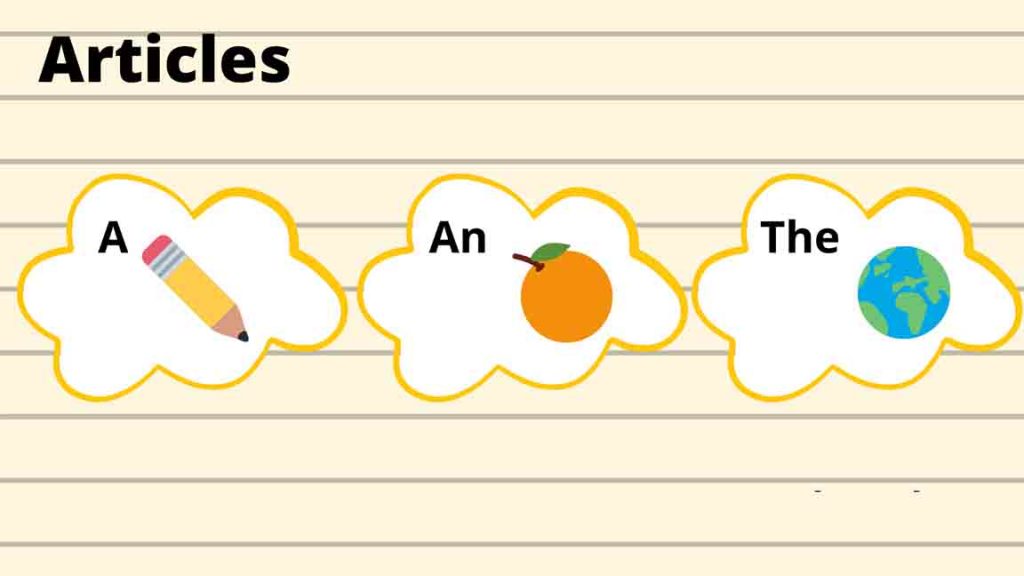
Chúng ta dùng a/an trước một danh từ số ít đếm được. “a/an” đều có nghĩa là một. Chúng được dùng trong câu có tính khái quát hoặc đề cập đến một chủ thể chưa được đề cập từ trước.
Ví dụ:
- A dog is running on the street. (Một con chó đang chạy trên đường phố.)
- I saw a girl dancing very well last night. (Tôi thấy một cô gái nhảy rất tốt đêm qua.)
Mạo từ “an”: được sử dụng trước một danh từ đếm được, số ít và được bắt đầu bằng một nguyên âm.
Ta dùng “an” với những danh từ bắt đầu bằng nguyên âm a, e, i, o, u. (cách nhớ: uể oải)
Ví dụ:
- an apple (một quả táo)
- an egg (một quả trứng)
- an umbrella (một cái ô)
Mạo từ “a”: được sử dụng trước một danh từ đếm được số ít và được bắt đầu bằng một phụ âm.
Ngoài 5 nguyên âm kể trên thì còn lại sẽ là phụ âm. Ta dùng “a” với những danh từ bắt đầu bằng phụ âm và một số danh từ bắt đầu bằng u, y, h.
Ví dụ:
- a book (một quyền sách)
- a computer (một cái máy tính)
- a year (một năm)
- A house (một căn nhà)
6. Cách phát âm đuôi danh từ số nhiều
6.1. Các danh từ số nhiều theo nguyên tắc
Danh từ thường được chuyển sang hình thức số nhiều bằng cách thêm “s” hoặc “es” vào đuôi như trên. Cách phát âm đuôi của danh từ số nhiều cũng giống cách phát âm tiếng Anh đuôi s, es:
- Khi danh từ có tận cùng bằng các phụ âm vô thanh /p/, /t/, /k/, /f/, /θ/, âm đuôi đọc là /s/
VD: students /ˈstudənts/, months /mʌnθS/, cups /kʌps/
- Khi danh từ có tận cùng là các âm /s/, /z/, /ʃ/, /tʃ/, /ʒ/, /dʒ/, âm đuôi đọc là /iz/
VD: kisses /’kɪsiz/, brush /brә:∫iz/, garage /ɡəˈrɑːʒiz/
- Khi danh từ có tận cùng là các âm còn lại âm đuôi đọc là /z/.
VD: pens /pɛnz/ (cái bút), rooms /ruːmz/ (căn phòng), things /θɪŋz/ (thứ)
6.2. Các danh từ số nhiều bất quy tắc
Học danh từ trong tiếng Anh thì chắc chắn không thể bỏ qua kiến thức quan trọng về các danh từ số nhiều bất quy tắc dưới đây. Cùng tham khảo nhé!
Các danh từ số ít thông dụng chỉ cần thay đổi nguyên âm của từ để thành số nhiều
| Danh từ số ít | Cách đọc | Danh từ số nhiều | Cách đọc | Tạm dịch |
|---|---|---|---|---|
| foot | /fʊt/ | feet | /fiːt/ | bàn chân |
| tooth | /tuːθ/ | teeth | /tiːθ/ | răng |
| goose | /ɡuːs/ | geese | /ɡiːs/ | ngỗng |
| man | /mæn/ | men | /men/ | đàn ông |
| woman | /ˈwʊmən/ | women | /ˈwɪmɪn/ | phụ nữ |
Các danh từ số ít thông dụng thay đổi luôn cách đánh vần để tạo danh từ số nhiều
| Danh từ số ít | Cách đọc | Danh từ số nhiều | Cách đọc | Tạm dịch |
|---|---|---|---|---|
| a mouse | /maʊs/ | mice | /maɪs/ | chuột |
| a die | /daɪ/ | dice | /daɪs/ | con súc sắc |
| an ox | /ɑːks/ | oxen | /ˈɑːksn/ | bò đực bị thiến |
| a child | /tʃaɪld/ | children | /ˈtʃɪldrən/ | đứa trẻ |
| a person | /ˈpɜːrsn/ | people | /ˈpiːpl/ | người |
Với từ person, nó còn có số nhiều là persons, nhưng chỉ được dùng trong các trường hợp trang trọng.
Cách danh từ mà dạng số ít và số nhiều của nó… giống nhau hoàn toàn
| Danh từ số ít | Danh từ số nhiều | Cách đọc | Tạm dịch |
|---|---|---|---|
| a sheep | sheep | /ʃiːp/ | con cừu |
| a fish | fish | /fɪʃ/ | cá |
| a deer | deer | /dɪr/ | huơu, nai |
| a moose | moose | /muːs/ | nai sừng tấm Á-Âu |
| a buffalo | buffalo | /ˈbʌfələʊ/ | con trâu |
7. Một số lưu ý bạn cần ghi nhớ về danh từ
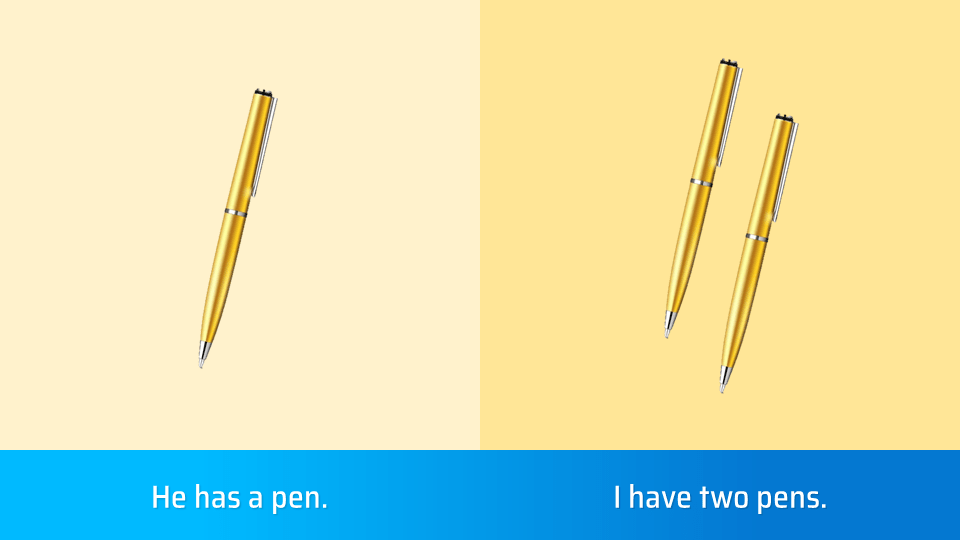
Không phải danh từ nào kết thúc bằng -s đều ở dạng số nhiều
Các danh từ dưới đây đều kết thúc bằng -s nhưng đều không phải là dạng số nhiều.
- news (tin tức),…
- billiards (trò chơi bi-a),…
- Các căn bệnh: mumps (bệnh quai bị), measles (bệnh sởi),…
- Môn học: mathematics (toán học), physics (vật lý học), linguistics (ngôn ngữ học), aerobics (thể dục nhịp điệu), gymnastics (môn thể dục dụng cụ), statistics (thống kê học), acoustics (âm học),…
- means (tiền bạc), species (loài vật),…
Có các danh từ trong tiếng Anh chỉ có dạng số nhiều, không có dạng số ít
Và các danh từ này cũng không thể “đi chung” với số luôn. Các danh từ này thường là các vật có 2 phần. Ví dụ:
- Y phục
- panties, boxers, briefs, pantyhose,…
- jeans (quần gin), pants (quần dài), pajamas (quần áo ngủ), shorts (quần sóoc),…
- Các dụng cụ
- headphones, earphones,… (tai nghe)
- pliers (cái kìm), scissors (cái kéo), tongs (cái kẹp), tweezers (cái nhíp),…
- binoculars (ống nhòm), eyeglasses (mắt kính), sunglasses (kính mát), goggles (kính bảo hộ),…
Vì các danh từ này có 2 phần, cho nên khi nói về chúng, người bản ngữ thường dùng cụm từ “a pair of”/”pairs of” để chỉ số lượng của chúng.
- I have a new pair of sunglasses.
- You can get rid of that old pair of earphones.
- I’d like to buy three pairs of briefs and one pair of pants.
Ngoài ra, chúng ta còn có các danh từ chỉ có dạng số nhiều phổ biến khác như
- earnings (tiền lương)
- belongings (của cải), clothes (quần áo)
- congratulations (lời chúc mừng), thanks (lời cảm ơn)
- outskirts (vùng ngoại ô), premises (cơ ngơi), surroundings (vùng xung quanh)
Và đương nhiên, những danh từ này trong câu phải đi với đại từ số nhiều và động từ số nhiều
- Make sure your belongings are tagged with your name before you check them in.
- His thanks are clearly sincere.
- If your clothes are wet, you can dry them upstairs.
- The outskirts of Da Nang are really pretty and they stretch for miles.
8. Một số từ và cụm từ thường được dùng với danh từ đếm được và không đếm được
| Danh từ đếm được (count nouns) | Danh từ không đếm được (non-count nouns) |
|---|---|
| a/an (chỉ dùng với số ít) | — (không đi kèm mạo từ) |
| the | the |
| some | some |
| a lot of / lots of | a lot of / lots of |
| many (nhiều) | much (nhiều) |
| a few (một vài) | a little (một vài) |
| few (một ít) | little (một ít) |
| fewer (dạng so sánh hơn của few) | less (dạng so sánh hơn của little) |
| fewest (dạng so sánh nhất của few) | least (dạng so sánh nhất của little) |
| not many (không nhiều) | not much (không nhiều) |
| not any (không có gì) | not any (không có gì) |
9. Những danh từ trong tiếng Anh thường gặp
| Từ tiếng Anh | Nghĩa tiếng Việt | Từ tiếng anh | Nghĩa tiếng Việt |
| Tree | Cái cây | News | Tin tức |
| Car | Ô tô | Paper | Giấy |
| People | Người | Story | Câu chuyện |
| Dog | Con chó | Park | Công viên |
| Cat | Con mèo | Lake | Hồ nước |
| Store | Cửa hàng | Bike | Xe đẹp |
| Way | Đường xá | Bag | Cặp sách |
| World | Thế giới | School | Trường học |
| Water | Nước | Market | Chợ |
| Sugar | Đường mía | Vegetable | rau |
| map | Bản đồ | Flower | hoa |
| Family | Gia đình | Rice | Cơm |
| Meat | Thịt | Goal | Mục tiêu |
| Computer | Máy tính | Area | Khu vực |
| Year | Năm | Army | Quân đội |
| Music | Âm nhạc | Thing | Vật |
| Door | Cái cửa | Painting | Tranh |
| Table | Cái bàn | Ball | Quả bóng |
| Book | Quyển sách | Wood | Gỗ |
| Pen | Bút | Fire | Lửa |
| Bird | Con chim | Money | Tiền |
| Candy | Kẹo | Zoo | Sở thú |
| Food | Thức ăn | Bus | Xe Buýt |
| Power | Quyền lực | Eyes | Đôi mắt |
| Love | Tình yêu | Dress | Cái đầm |
10. Bài tập về danh từ trong tiếng Anh
Phần bài tập
Exercise 1: Cho dạng đúng của các từ trong ngoặc ở những câu dưới đây
1. Detroit is renowned for the _____________ of car. (produce)
2. If you make a good ________________ at the interview, you will get the job. (impress)
3. The _________________ looked dark and there were hardly any other guests. (enter)
4. My history teacher has a vast ________________ of past events. (know)

5. You are never too old to go to college and gain some _______________. ( qualify)
6. My greatest ________________ was graduating from university. (achieve)
7. The weatherman said there is a strong _______________ of rain today. (possible)
8. Despite her severe _________________, she fulfilled her goals in life. (disable)
9. I am really into eating dairy______________. (produce)
10. Due to the pilot’s _____________, the copilot managed to land safely. (guide)
Exercise 2: Chọn dạng thích hợp của danh từ trong những chố trống sau để tạo thành một bài IELTS Writing task 2 hoàn chỉnh
Some people believe that developments in the field of artificial intelligence will have a positive impact on our lives in the near future. Others, by contrast, are worried that we are not prepared for a world in which computers are more intelligent than humans. Discuss both of these views and give your own opinion.
People seem to be either excited or worried about the future impact of artificial (1-intelligent)………… Personally I can understand the two (2-oppose)……….points of view; I am both fascinated by developments in artificial intelligence and apprehensive about its possible negative effects.
On the one hand, the increasing intelligence of technology should bring some obvious benefits. Machines are clearly able to do many jobs better than humans can, especially in areas that require high levels of (3-accurate)…………or calculations using large amounts of data. For example, robots are being developed that can carry out surgical procedures with greater (4-precise)………..than a human doctor, and we already have cars that use sensors and cameras to drive themselves. Such technologies can improve safety by reducing the (5-likely)…………..of human errors. It is easy to imagine how these developments, and many others, will steadily improve our quality of life.
On the other hand, I share the concerns of people who believe that artificial intelligence may harm us if we are not careful. In the short term, it is likely that we will see a rise in (6-employ)…………..as workers in various industries are replaced by machines or software programs.
For example, self-driving vehicles are expected to cause (7-redundant)…………….in driving jobs, such as lorry drivers, taxi drivers and bus drivers. In the medium term, if intelligent technologies gradually take jobs away from humans, we may find that people become deskilled and lose their sense of purpose in life. A longer term fear is that computers become so intelligent that they begin to make (8-decide)…………without human oversight and without regard for our well-being.
In conclusion, while intelligent machines will no doubt improve our lives in many ways, the potential risks of such technologies should not be ignored.
Exercise 3: Đoạn văn sau bao gồm 3 lỗi sai. Tìm và sửa chúng
In many city all over the world, spectacular fireworks displays take place as soon as the clock passes midnight on 31 December. In recent years, Sydney in Australia has been the host to one of the first of these celebrate as New Year arrives there before most other major international cities. The display takes place in Sydney Harbor, with the Opera House and Harbor Bridge making it a stunning set. Fireworks light up the skies in hundreds of cities as 12 midnight strikes around the globe.
1………………. 2………………. 3………………….
Exercise 4: Dựa vào những từ cho sẵn, hãy viết thành câu hoàn chỉnh
1. The bar chart/ illustrate/ gross domestic product generated from the IT and Service Industry/the UK from 1992 to 2000.
………………………………………………………………………………………..
2. It is measured in percentages. Overall, it can be seen/ both increase/ as a percentage/ GDP, but/ IT/ remain/ at/ higher rate throughout/ time.
………………………………………………………………………………………..
3. At/ beginning/ the/ period, in 1992, the Service Industry account/ for/ 4 per cent/ GDP, whereas IT exceed/ this, at just over 6 per cent.
………………………………………………………………………………………..
4. Over/ next four/ year/, the levels become/ more/ similar, with/ both/ components/ standing/ between 6 / just/ over/ 8 per cent.
………………………………………………………………………………………..
5. IT/ still/ higher/ overall, though it/ drop/ slightly/ 1994/ 1996.
………………………………………………………………………………………..
Exercise 5: Mỗi câu sau chứa một lỗi sai. Tìm và sửa chúng
1. There are many dirts on the floor.
…………………………………………
2. We want more fuels than that.
…………………………………………
3. He drank two milks.
…………………………………………
4. Ten inks are needed for our class.
…………………………………………
5. He sent me many foods.
…………………………………………
6. Many golds are found there.
…………………………………………
7. He gave me a great deal of troubles.
…………………………………………
8. Cows eat grasses.
…………………………………………
9. The rain has left many waters.
…………………………………………
10. I didn’t have many luggages.
…………………………………………
Exercise 6: Chọn đáp án đúng cho mỗi câu sau
1. If you want to hear the news, you can read (paper/ a paper).
2. I want to write some letters but I haven’t got (a paper/ any paper) to write on.
3. I thought there was somebody in the house because there was (light/a light) on inside.
4. (Light/a light) comes from the sun.
5. I was in a hurry this morning. I didn’t have (time/ a time) for breakfast.
6. “Did you enjoy your holiday?” – “Yes, we had (wonderful time/ a wonderful time).”
7. Sue was very helpful. She gives us some very useful (advice/advices).
8. We had (very bad weather/a very bad weather) while we were on holiday.
9. We were very unfortunate. We had (bad luck/a bad luck).
10. It’s very difficult to find a (work/job) at the moment.
11. I had to buy (a/some) bread because I wanted to make some sandwiches.
12. Bad news (don’t/doesn’t) make people happy.
13. (Your hair is/ your hairs) are too long. You should have (it/them) cut.
14. Nobody was hurt in the accident but (the damage / the damages) to the car (was/were) quite bad.
15. She gives me (a piece of advice/ an advice) about this.
Exercise 7: Điền mạo từ thích hợp vào những chỗ trống sau
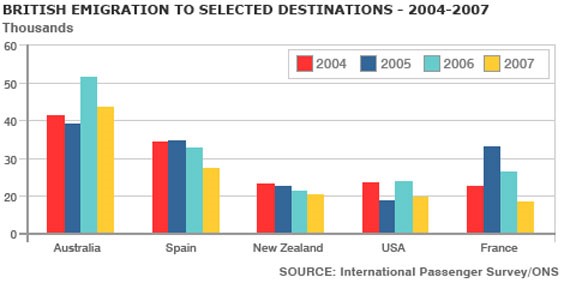
(1)……………..bar chart shows the number of British people who emigrated to five destinations over (2)…………….period 2004 to 2007. It is evident from the chart that throughout the period, the most popular place to move to was Australia.
Emigration to Australia stood at just over 40,000 people in 2004, which was approximately 6,000 higher than for Spain, and twice as high as the other three countries. Apart from a jump to around 52,000 in 2006, it remained around this level throughout the period.
(3)…………….next most popular country for Britons to move to was (4)………….Spain, though its popularity declined over the time frame to finish at below 30,000 in 2007. Despite this, the figure was still higher than for the remaining three countries. Approximately 20,000 people emigrated to New Zealand each year, while the USA fluctuated between 20-25,000 people over the period.
Although (5)………….number of visitors to France spiked to nearly 35,000 in 2005, it was the country that was the least popular to emigrate to at the end of the period, at just under 20,000 people.
Exercise 8: Điền mạo từ thích hợp vào chỗ trống để tạo thành một bài Writing task 2 hoàn chỉnh
There are several reasons that are causing the environmental harms and this has become (1)………….urgent issue to discuss and bring (2)……………..solution about.
The number of ever increasing cars is one of (3)…………….reasons that leads to affect the environment negatively and there are some assumptions that increasing the fuel price would solve this problem. But the reality would be different, and increased fuel price will cause lots of other problems while it would contribute very little to reduce the environmental pollutions and hazards. So this can’t be the best solution in any way.
First of all, the maximum numbers of cars are owned by the rich people and fuel price would not restrain them from using the cars. The price of (4)…………..fuel, in fact, increased significantly over the past 12 years and that has done nothing to reduce the car usages. On the contrary, the number of cars running on the roads has increased more than expected.
Besides, (5)…………fuel price determines the market prices of other daily necessary products and increasing the price would only bring misery to the low and medium earning class population. Electronic wastages, industries, household electrical devices, deforestation, chemical wastages, unthoughtful activities of people are causing more damage to the mother earth than the gas omission by the cars. We should focus on those aspects as well before increasing the price of fuel just based on (6)……………assumption.
The main idea of increasing the fuel price is to reduce (7)…………….number of cars running in the street and to restrain the car owners from using the cars less. But that would prove to be (8)………..ridiculous solution especially when car owners are mostly high earning class and they would not bother about the fuel price.
The best solution to address this utmost concerning issue is to introduce (9)…………environment friendly energy source like solar energy system, to improve the public transportation system & train system so that people mostly use these systems instead of always using their own cars, increasing the awareness of the people so that they do not directly contribute to harm the environment, and making strict rules so that deforestation, chemical wastages and other harmful ways of (10)……….environmental pollutions get reduced.
Exercise 9: Cho dạng đúng của các từ trong ngoặc
1. After Monday, I will no longer be a foreigner – I am receiving my ________________! (citizen)
2. My father’s death left me with a great_________________ in my heart. (empty)
3. Americans fought hard to earn their _________________from Britain. (free)
4. The weather ________________looks bad for a picnic–rainy and windy! (cast)
5. The new job is a ___________ for her. (promote)
6. The national ____________ in the face of danger is necessary. (solid)
7. He came first in the poetry __________. (compete)
8. After considerable ______________ they decided to accept our offer.
(discuss)
9. Fill in your name, address and __________ on the form. (nation)
10. Can I see your ____________card, please ? (identify)
Exercise 10: Tìm và sửa 5 lỗi sai trong bài viết sau để tạo thành một bài viết IELTS Writing task 1 hoàn chỉnh
The line graph shows the percent of tourists to England who visited certain Brighton attracts between 1980 and 2010. We can see that in 1980 and in 2010 the favorite attractions were the pavilion and the festival. In 1980 the least popular attraction was the pier but in 2010 this changed and the art gallery was the least popular.
During the 1980s and 1990s there was a sharpen increase in visitors to the pavilion from 28% to 48% and then the percentage gradually went down to 31% in 2010. The trend for the art gallery was similar to the pavilion. Visitors increased rapidly from 22% to 37% from 1980 to 1985 then gradually decreased to less than 10% over the next twenty-five years.
The amount of tourists who visited the Brighton Festival fluctuated slightly but in general remained steady at about 25%. Visitor to the pier also fluctuated from 1980 to 2000 then rose significantly from 12% to 22% between 2000 and 2010.
Exercise 11: Dịch các câu sau đây sang tiếng Anh có sử dụng dạng Noun + Noun
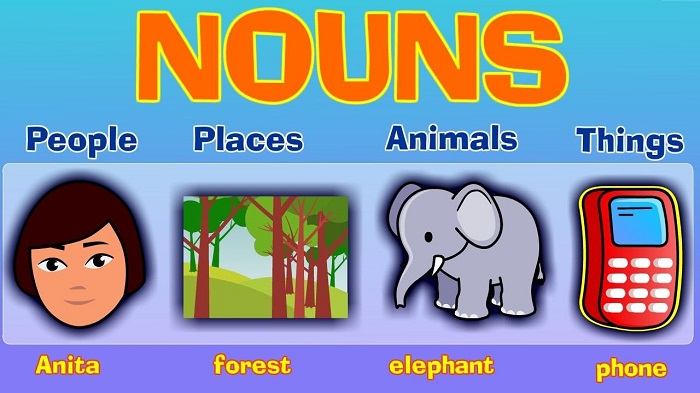
1. Tôi mới mua một quyển từ điển dày 500 trang.
=>________________________________________________________________
2. Chuyến bay 3 tiếng từ Việt Nam sang Singapore làm cho cô ấy mệt mỏi.
=>________________________________________________________________
3. Có một tòa nhà 9 tầng ở cuối phố.
=>______________________________________________________________
4. Khách sạn 5 sao là những khách sạn rất sang trọng.
=>______________________________________________________________
5. Sarah có một cậu con trai 3 tuổi.
=>______________________________________________________________
Exercise 12: Cho dạng đúng của các từ trong ngoặc để tạo thành một bài IELTS Speaking part 2 hoàn chỉnh
Let me tell you about a language I’ve always wanted to learn, which is (1-Russia)___________. It’s spoken in Russia, obviously, but also in many other countries which have been influenced by Russia including places like Mongolia and Kazakhstan. It’s quite a difficult language to learn because the (2-alphabetical)_____________is not the Roman one, which means that you have to learn to read and write from scratch, a but like studying Chinese or Japanese.
Well, the reason I would like to learn Russian is that the energy (3-industrial)___________is huge and there are lots of jobs. A lot of my country’s oil and gas comes from Russia so it’s really useful to be able to speak that language if you want to work in the energy field.
I have actually been to Russia before so I know from experience that a lot of Russians can’t speak English very well, so that’s another good (4-reasonable)__________to learn their language. The only (5-problematic)____________ is I’m already thirty years old and I’ve spent more than fifteen years learning English. I don’t know if I would ever be able to learn Russian successfully because it’s a difficult language for anyone to learn, especially someone older like me. But it would be really great to try.
Đáp án
Exercise 1
1. production
2. impression
3. entrance
4. knowledge
5. qualifications
6. achievement
7. possibility
8. disability
9. products
10. guidance
Exercise 2
1. intelligence
2. opposing
3. accuracy
4. precision
5. likelihood
6. unemployment
7. redundancies
8. decisions
Exercise 3
1. city => cities
2. celebrate => celebrations
3. set => setting
Exercise 4
1. The bar chart illustrates the gross domestic product generated from the IT and Service Industry in the UK from 1992 to 2000.
2. It is measured in percentages. Overall, it can be seen that both increased as a percentage of GDP, but IT remained at a higher rate throughout this time.
3. At the beginning of the period, in 1992, the Service Industry accounted for 4 per cent of GDP, whereas IT exceeded this, at just over 6 per cent.
4. Over the next four years, the levels became more similar, with both components standing between 6 and just over 8 per cent.
5. IT was still higher overall, though it dropped slightly from 1994 to 1996.
Exercise 5
1. There are many dirts on the floor. => There is a lot of dirt on the floor.
2. We want more fuels than that. => We want more fuel than that.
3. He drank two milks. => He drank two bottles of milk.
4. Ten inks are needed for our class. => Ten bottles of ink are…
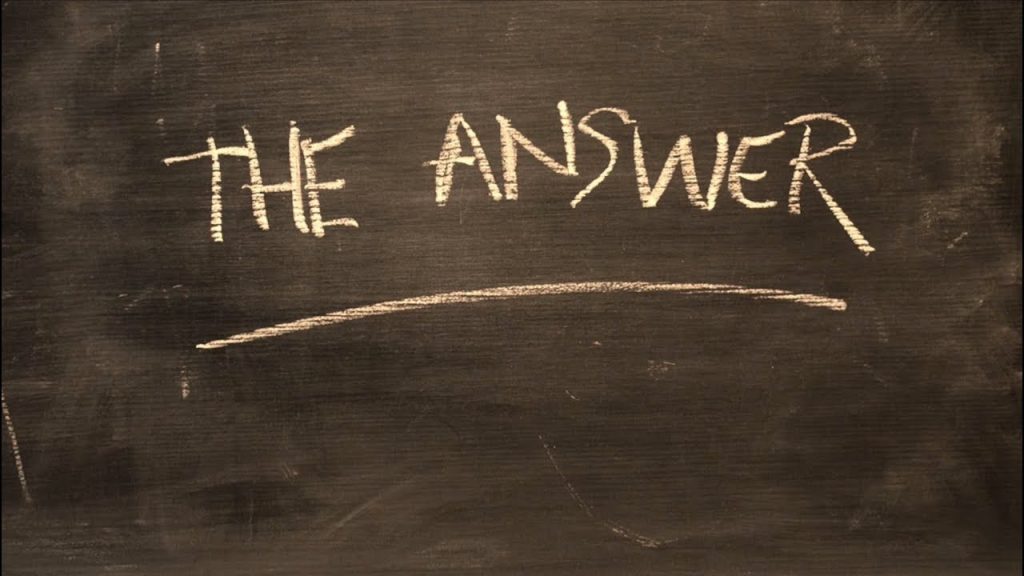
5. He sent me many foods. => He sent me a lot of food.
6. Many golds are found there. => A lot of gold is found there.
7. He gave me a great deal of troubles. => He gave me a number of troubles.
8. Cows eat grasses. => Cows eat grass.
9. The rain has left many waters. => The rain has left a lot of water.
10. I didn’t have many luggages. => I didn’t have much luggage.
Exercise 6
1. a paper
2. any paper
3. light
4. Light
5. time
6. a wonderful time
7. advice
8. very bad weather
9. bad luck
10. job
11. some
12. doesn’t
13. Your hair; it
14. the damage; was
15. a piece of advice
Exercise 7
1. the 2. the 3. the 4. x 5. the
Exercise 8
1. an 2. a 3. the 4. x 5.the 6. an 7. the 8. a 9. an 10. x
Exercise 9
1. citizenship
2. emptiness
3. freedom
4. forecast
5. promotion
6. solidarity
7. competition
8. discussion
9. nationality
10. identity
Exercise 10
1. percent => percentage
2. attracts => attractions
3. sharpen => sharp
4. amount => number
5. Visitor => Visitors
Exercise 11
1. I have just bought a 500-page dictionary.
2. The three-hour flight from Vietnam to Singapore made her tired/ exhausted.
3. There is a nine-storey building at the corner of the street.
4. Five-star hotels are very luxurious.
5. Sarah has a three-year-old son.
Exercise 12
1-Russian 2-alphabet 3-industry 4-reason 5-problem
Trên đây là phần lý thuyết về danh từ trong tiếng Anh và một số bài tập thực hành mà duhoctms.edu.vn đã tổng hợp. Hãy chia sẻ bài viết nếu các bạn thấy nó hữu ích nhé! Chúc các bạn học tập tốt.

Bình luận